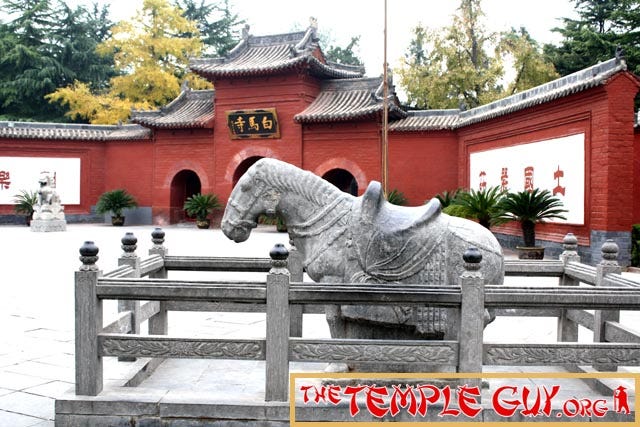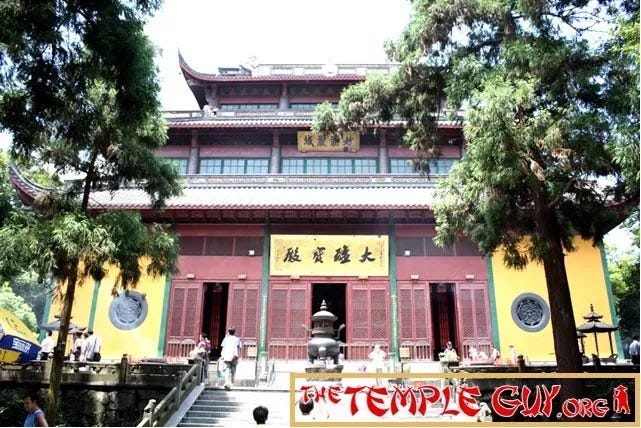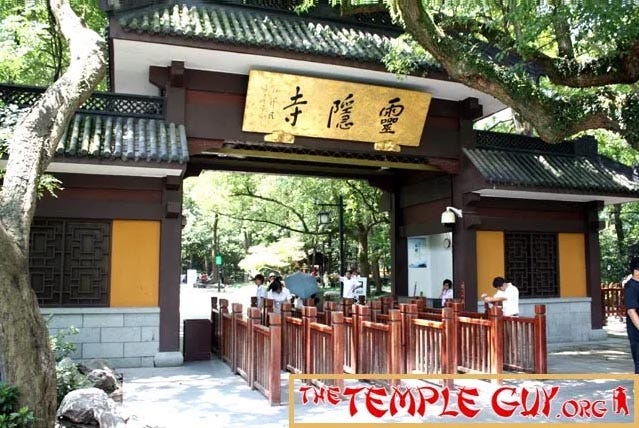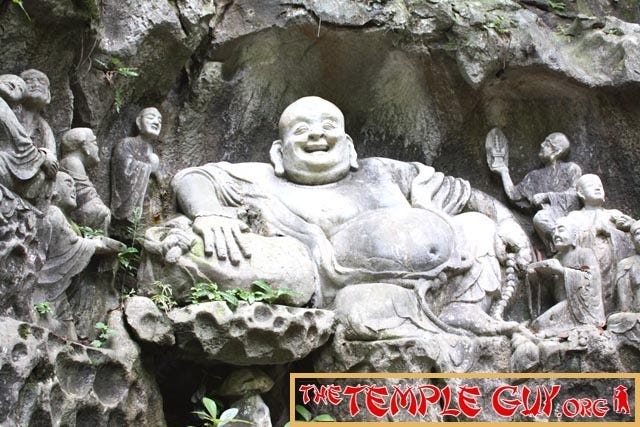Introduction: A Little History
Some believe that Marco Polo "discovered" China.
But in fact, adventurers, traders, and pilgrims had been traveling in and out of China to "the West" for more than a millennium when the Venetian merchant arrived in the late 13th century.
According to legend, when the first Buddhist emissaries to be officially received by Chinese authorities arrived at the then-capital of Luoyang, in 68 CE, they were housed in a ministry compound reserved for visiting foreigners. True or not, the story shows that foreigners were expected.
The place they stayed is today called "White Horse Temple" (Baima Si), named for the mounts they rode. The word we commonly use for "temple," si, originally meant a government ministry.
Polo did, however, use the same route that overland visitors from "the West" had used: the so-called "Silk Road," actually a web of land and sea routes that had connected China to India (and beyond) since the second century BCE.
Two famous Chinese monks--Faxian (337-c. 422 CE) and Xuanzang (602-664)--left records of their travels from the Chinese capital of Chang'an (modern Xi'an), skirting China's western deserts, and through Central Asia (the -stans) to India, where they met prominent Buddhist teachers, and from where they brought scriptures and artifacts back to China. Xuanzang's trip is especially well-known in popular culture as the origin of the wildly successful Ming Dynasty novel, The Journey to the West (published in the 16th century), a satire on the Chinese culture of the day. It is today considered one of China’s four great classical novels.
But aside from these luminaries (perhaps more famous than others because of the records they left), many lesser-known and unknown travelers also made the trip. One of these--known in China as Huili--was an Indian monk whose Sanskrit name may have been Matiyukti. Tradition says he arrived in the far eastern Chinese city of Hangzhou in 326 CE, where he is said to have founded one of the area's most prominent Buddhist temples, Lingyin Si. The tale that follows spells out the legend of another of his foundations, called Feilai Feng or "the Peak that Flew from Afar."
When Huili arrived, the famed West Lake had not yet taken its current form. It was probably then a lagoon--little more than a swamp--fed by the Qiantang River, which debouches into Hangzhou Bay and the East China Sea nearby. Prehistorically, it may have been an inlet of the sea, though it's a freshwater lake now.
The story as told here is somewhat anachronistic. Hangzhou did not receive that name until around the year 589, when it became the seat of Hang Prefecture. And the first carvings on the Peak were made long after Huili's demise.
In addition, we don't know Huili's home province (though it can be inferred), nor his exact route. After much research, I have used my authorial license to give a plausible account of his travels. But the story of his encounter with the Feilai Feng is based on the traditional account.
The Story: Huili and the Flying Peak
It had been an arduous and seemingly interminable journey.
As the exhausted monk stumbled up the streambed away from the so-called "lake," he reflected on the hardships he had suffered and the wondrous sights he had seen, even as he wished for a sign that his journey was at an end.
Many years before, he had left his beloved homeland, which we now call "India." Many times he had walked the very ground where his beloved master the Buddha had lived and taught. After toiling through the austere grandeur of the desert wastes, in the company of trading caravans, he had at last arrived in the capital city of this eastern empire, a place called Jiankang (known today as Nanjing, or "Southern Capital").
There, the year before, he was fortunate to see the coronation of a boy emperor, just four years old, named Sima Yan (whom today we call Emperor Cheng of Jin). The child would rule under regents for most of his life, only to die tragically of illness, aged just 21.
But the capital had not been in need of the Master's teachings. Emissaries from India had been officially received at a previous capital, Luoyang, over two and a half centuries earlier, and the Dharma had become well established in the Empire.
No, despite having many opportunities to teach along the way, he had never had a sign that it was time to settle down. He wanted to end his journey at a place where the precious word had not yet reached.
So, meeting the captain of a flat-bottomed boat (called a cao, but which we now call a junk), he arranged passage to a place called Hangzhou, the captain's home port. The captain had made a decent living transporting raw jade from there for the craftsmen in the capital to carve, and bringing home luxury goods on his return to sell to the citizens of his humble town.
The voyage took them down the mighty Yangtze; on a coast-hugging sail down the coast of the sea (past the future site of Shanghai); and then a short way up another river to their final destination.
How was the monk to know that this place would be a figurative as well as a literal backwater?
As he continued to struggle upstream, swatting mosquitoes and startling water snakes, it was hard to tamp down a desire that the ship's captain would be reborn in his next life as one of these tormentous creatures.
Little did he know that, far in the future, famed world travelers would call this place "the most beautiful and magnificent in the world" and, simply, "the biggest city I have ever seen on the face of the earth."
Nor did he know that the very spot where he settled would become one of that future city's premier attractions.
At last, despite the stamina he had developed over his many long years of travel, he felt the need to take a rest. Sitting down on the stream's bank, he lifted his eyes and beheld the greatest marvel of his entire journey.
There, across the small canyon, was a limestone ridge. Stretching (as he was later to learn) nearly 2,000 feet (600 meters), it was unlike any of the surrounding terrain. It looked as though--
Suddenly the monk jumped up. "What is this?" he cried. "It appears as though Gridhrakuta, the Vulture Peak, has flown from my motherland to this very spot!"
Here at last was the sign he had been looking for. For Vulture Peak
was not just any peak. That hill in India, which resembled a great bird, was the Master's favorite place to retreat and to share the pure words of his teaching. How, in this foreign land, could he ever hope to find a better place to emulate the Buddha and share his Dharma?
As he stood in awe, a group of people gathered around, coming in ones and twos out of the nearby woods.
"What is it you are saying?" asked one of them, clearly the village leader.
"I have come from afar," the monk replied, "and while I was journeying slowly overland, a piece of my homeland has flown here ahead of me!"
Though they weren't sophisticated folk, still they grumbled their skepticism.
"How can we know," the headman spoke up, "that such a fantastic story is true?"
"Wait!" the monk said. "I have friends who were living on the ridge when I left. Let me call them forth. Will that satisfy your doubts?"
"What kind of friends?" the headman asked suspiciously.
"Two apes," the monk replied, "one white, and one black."
"Then, be my guest!" said the headman, crossing his arms with a scowl, and slightly shaking his head to indicate what he really thought of this whole enterprise.
To the great surprise of the people, the monk began shouting quite loudly in a strange tongue. Even more surprising was when, down from the hill, came first one, then a second monkey. As the monk had predicted, one was white, the other black, like the principles of yin and yang that had guided the people's lives.
"And here they are!" the monk cried.
Well, that was enough for the people. Although they had seen monkeys in the area, they had never seen this pair. And they had never known of anyone who could call monkeys out in their own language!
And so, on that very spot, across the stream from the ridge, the people built a hut for the monk to live in, and to practice his discipline, and to teach. Over time, a temple was to grow there.
The days passed peacefully enough, until the headman came to monk Huili--for that was what they called him, meaning "Wise Truth"--and said, "The people are disturbed."
"What is the problem?" asked Huili.
"This peak, the one that has impressed you so. The people are concerned that someday it may again rise into the air, and may perhaps come down on a village somewhere--maybe even ours! Is there a way to prevent such a calamity?"
"Let me give it some thought," Huili answered, "and I will find a way to protect you. Come back in 28 days, on the next new moon."
And so he meditated deeply on the problem, sitting in his favorite cave in the ridge, until on the appointed day the people returned.
"It has been given me to know," Huili announced, "that the way to keep this ridge in place is to seal it with certain signs."
"And what are these?" the people wanted to know.
"Carve into the stone such figures as I will show you. Buddhas and Bodhisattvas, disciples of the Buddha, in grottoes and caves--with these marks the hill will surely stay put!"
And so they did.
Conclusion: The Lingyin Scenic Area Today
Visitors to Hangzhou today can take a quick easy drive by a modern road from the southwestern shore of West Lake to the Lingyin Scenic Area. Private cars, taxis, and buses disgorge tourists (mingled with a few devout pilgrims) set on taking in the sights. (One government source claims an estimated 4.5 million people visit every year--an average of over 12,000 a day!)
After buying a ticket and entering the imposing gate, they take a short, leisurely stroll on a paved walkway, with Huili's stream on their right, until, across a small plaza, they see an ancient seven-story stone tower standing at the east end of the peak.
This is the Ligong Pagoda, said to be the final resting place of the ashes of Huili. The one we see today was rebuilt in 1590.
The ridge itself is wonderful to explore, with around 345 figures (by one estimate) carved since the Tang Dynasty. And Lingyin Si, the temple that grew on the site of Huili's hut, is magnificent. Though it is smaller today than it once was, at its height it housed 3,000 monks, and was patronized by a number of emperors.
--------
That's that! Until next time, may you and your loved ones and all sentient beings be well and happy.
Adios, Amigos!
GET MORE:
Find this and all past issues of the Newsletter online at Substack.
If you have any problems reading the Newsletter , please write to me at TheTempleGuy@GMail.com, and I'll help you in any way I can!
In the next episode: Facts and miracles surrounding the birth of the Buddha









